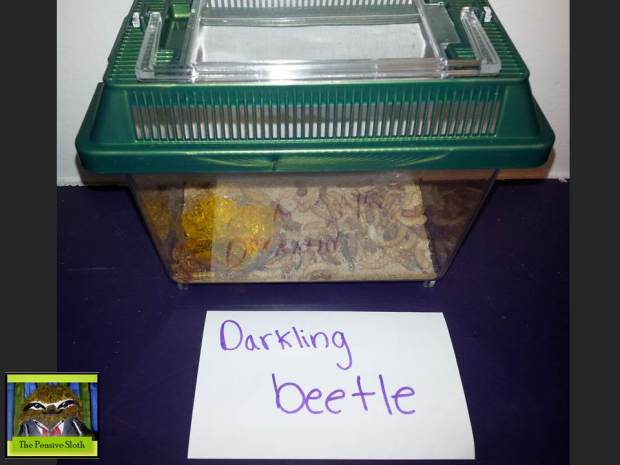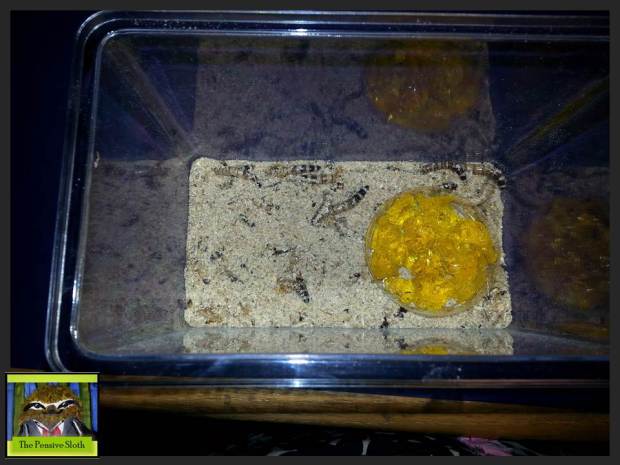
Our Insect Zoo–We are studying complete and incomplete metamorphosis. Which insects undergo complete metamorphosis? Incomplete metamorphosis?
One of our state standards for 5th grade life science is insect life cycles. Students are expected to describe the differences between incomplete and complete metamorphosis. What better way to do this than by watching it happen in real time! So, we have created an insect zoo in our classroom. You can do it too! Here are our inhabitants.
Madagascar Hissing Cockroaches–These little guys are awesome. The kids can handle them, they are hardy (so if you forget to feed them for a day or week then they are fine), and there are so many concepts you can teach! I partner students up and give each pair an adult roach in a plastic tub to touch and observe. They love this! There is usually some screaming and jumping back at first, but they really bond with the little roaches and start naming them by the end of the lesson. I had students sketch and label what they observed and write down questions to look up later and let me tell you, they did some serious Googling! There is nothing like seeing a kiddo truly engaged and searching to find out answers to their own questions. We always hold a debrief session and meet together on the rug to record what we have learned, especially new vocabulary. Oh, and these guys go through INCOMPLETE METAMORPHOSIS.
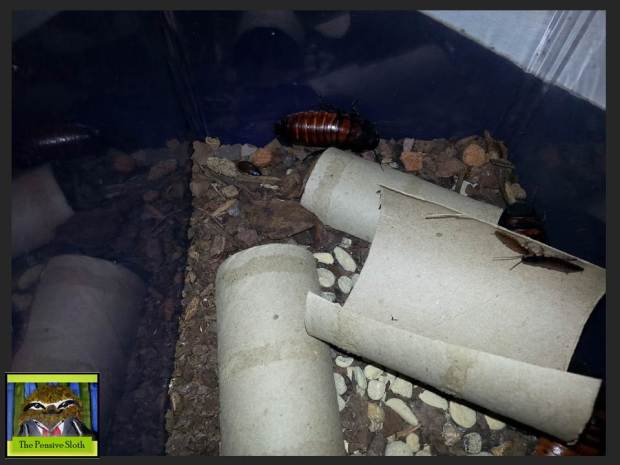
There are a few nymphs, or babies, on the underside of the toilet paper tube. There are lots more nymphs under the other tubes!

Here are our hissing cockroach pets from the top. These are adults. That yellow stuff in the corner is Cricket Quencher and is an easy way to provide water for cockroaches. They drown in water dishes that are too deep!
Darkling Beetles (AKA Mealworms)--I’m a little grossed out by these little guys in their pupal state, but these insects are a perfect example of COMPLETE metamorphosis. You can pick up mealworms at some bait shops or pet stores. I got mine at Petsmart. They are super cheap and easy to care for. They recommend oatmeal for them to munch and crawl around in. You should also provide a slice of potato every other day for water and extra carbs! Mealworms don’t watch their weight. Their goal, like all larva, is to pump up…to get fat! Anyway, with these guys your students will be able to see the larva, pupa, and adults. I’ve never seen an egg because they are so small. Mealworms are safe for students to handle in their larval state. We try not to disturb them when they are pupa just in case that would prevent them from making it to the adult stage.
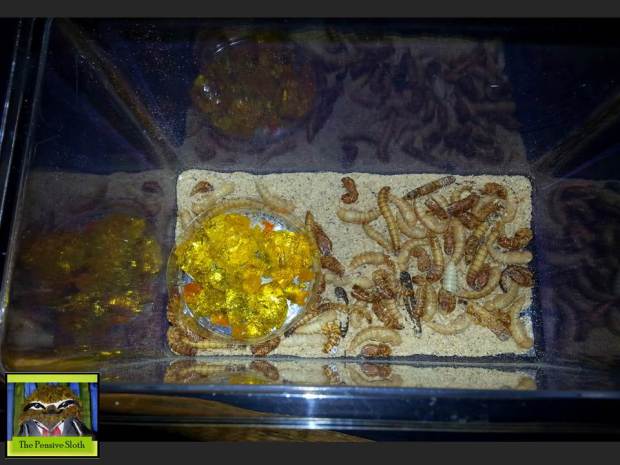
You can see two stages in this picture, the long brown guys are the larva, the off white guys are the pupa. You can see a really white pupa in the middle. He just shed his exoskeleton that afternoon! The dark brown worms didn’t make it…funeral arrangements have not been planned yet. 🙂

Here’s a view from the front of the pupa and larva. Darkling beetles will emerge soon…The yellow Cricket Quencher isn’t necessary right now because the pupa don’t eat or drink. There were a few larva left, so I put it in for them. We were all out of potatoes!
Superworms–This is my first year working with Superworms, but I wanted to have 2 examples of COMPLETE METAMORPHOSIS for my students so I discovered the Superworm. I always thought that they were just big mealworms. They aren’t. They are a species like the mealworm, but these guys are not safe for students to handle because they can pinch with their mouths. Superworms are bigger and a lot more active than mealworms. Also, you can’t refrigerate them. You may wonder “Why would I refrigerate worms?” Well, if you put mealworms in the fridge they will go into an dormant state for a while and won’t pupate. If you put Superworms in the fridge, they die. Superworms are slightly more fun to observe because they do wiggle more. You care for them in about the same way. Oatmeal and potatoes. Boy can they eat a potato! In just a day there will be holes all in your potato slice. What is REALLY cool about Superworms is that they won’t pupate unless isolated. What this means is that you have to separate each into a little container so that there is no food, water, or movement around it. Only then will it begin to pupate. Like I said, this is a first for me. We haven’t isolated them yet, but I think I will use a fishing lure box or craft storage box. I’ve heard that they will eat right out of egg cartons! I’ll post pictures when they start to pupate.

Here you can see a bunch of the little guys. I had to wiggle the tank to get them to come to the top. The yellow stuff is the Cricket Quencher. It isn’t necessary if you add a potato or moist fruit each day, but I was all out of potatoes and fruit.
Praying Mantis–If you want to teach your students about cannibalism, then these are the guys to help you do it! Actually, I don’t think any of us plan to do that, but that is exactly what happens when the nymphs emerge if you don’t feed them. The Praying Mantis is a great example of INCOMPLETE METAMORPHOSIS. They hatch from an egg case as tiny nymphs and almost immediately start hunting. No fruit flies? That’s ok. I’ll eat my siblings. It is truly survival of the fittest. We will feed these guys fruit flies and watch them grow! I’ll post more pictures as they do. You can order a Praying Mantis egg case online. Ours came set up in their habitat already! I don’t think the students have a grasp on how many will emerge from the egg case. We are planning to grow our own fruit flies as food, so watch for a post on that soon. I love science!!!
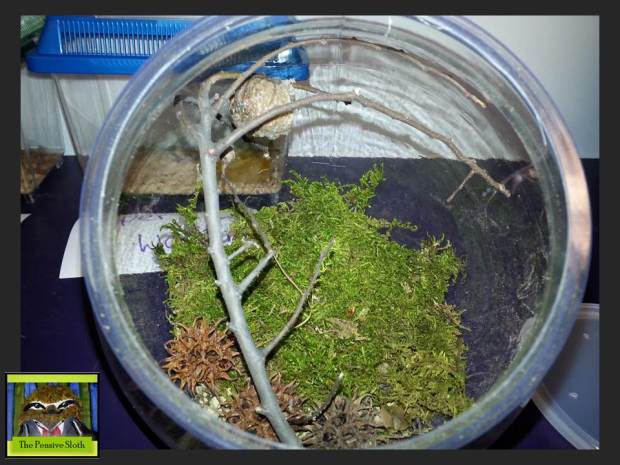
If you look closely you can see the egg case on the branch in the top left corner. I wonder how many little insects are in there?

Is the plural of mantis mantids or mantises??? You can see the egg case in the top right corner hanging off the branch. We can’t wait for the nymphs to come out!
Thanks for stopping by…follow this blog for updates on our insect zoo!
–The Pensive Sloth

